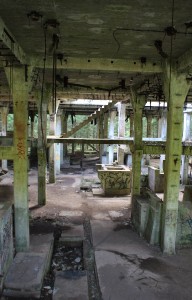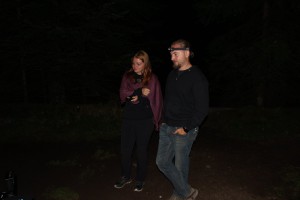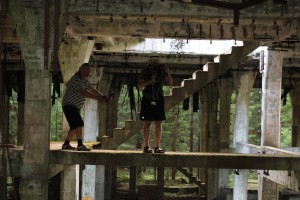Case No. 23 - Rolava Tin Mine (2019)
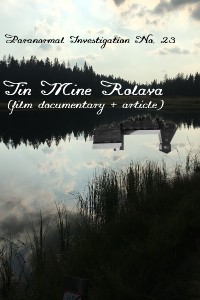
I would like to start by telling all readers of this article that I do not like excavations at sites associated with the great history of the 20th century. I would not like to investigate paranormal phenomena at the Pankrác Ax Factory, nor at the small fortress of Terezín. It is always a controversial topic. I have come to this realization also thanks to my experience with other research teams that have dared to investigate (for example) at the site of the murders of Jews during the Second World War. Ignorant of Jewish traditions, they lit candles at this burial site and, armed with radio transmitters, recounted on behalf of the dead imaginary stories that supposedly took place.
So maybe it's not just about that recent history, but also about access to the facts. It will always bother me when someone comes to the site of the murder of Agnes Hrůzová and, after research, declares that, thanks to the K2 EMF meter, they have proof that Leopold Hilsner killed her. But why am I mentioning this in an article about research at the Rolava tin mine?
Because it is here that we come to the site where during World War II prisoners had to mine tin for war purposes even under threat of death. And it is also a place about which many fictional stories circulate. Tales of hundreds of dead, of souls wandering in the dark, unable to find peace.
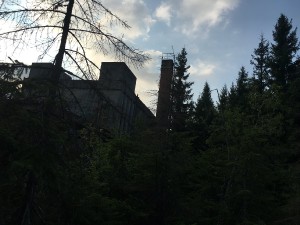
We have thought long and hard about how to approach this research. Like a search for the dead? Remembering a forgotten place? Or perhaps a memoir of the veterans who worked here? Our tried-and-true thesis: confirm the facts and dispel the myths, came to further use here, and during the preparations we said that we would expose the myths, which - as always - are abundant, to the facts we obtain here and confirm them historically. This will avoid the controversy associated with this place during the Second World War. And at the same time, we will not offend the memory and the memories of the surviving survivors.
On August 24, 2019, we arrived at a place that nature has once again taken for its own. The buildings of the tin mine were covered by trees and bushes. The tall grass only revealed to the observant the former foundations of the individual wooden buildings, but the concrete complex of the tin processing plant itself looked all the more impressive.
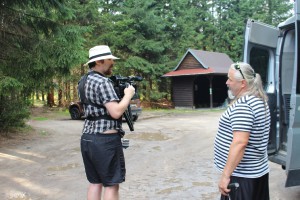
Nature like in a fairy tale and people like in Wenceslas Square. I don't recall that we have ever experienced such traffic at any of the locations we have studied. It's so enormous that for a while we've been thinking of closing the investigation. That's not happening after all. We're going through everything and determining what we're going to do at night and what routes to use. The terrain here is very treacherous. Full of various sinkholes and protruding pieces of concrete and wires.
Then, as the sun sets, two external observers arrive. Our party of five is now complete and the research can begin. Immediately after the last of the day's visitors get into their cars and drive away.
Phase 1 of the investigation: information
The most important thing at the beginning of any investigation is to obtain information about the site. This already starts with field research during the day. But now we are also interested in the energy values of the site. How does temperature, electromagnetism, or sound behave here? We're interested in everything, because each of the paths can lead to specific knowledge. At the same time, we are also carrying out another parallel, historical research in which we are uncovering historical information. And it is these that deal the first big blow to the myths. According to historical sources, five people died here. Two workers during the tin mining and three prisoners shot during an escape attempt. So not hundreds of dead. Of course, we don't know the details of the events, and it's hard to find any detailed documentation on the site. Either it hasn't survived or it hasn't been properly processed.
We, during the first phase of our paranormal research, have so far found that rather than a haunted place, the Rolava Tin Mine could be an example to all peaceful places. Energetically, it is indeed one of the most stable sites in terms of energy fluctuations. None have been detected by us.
But the problematic terrain is proving to be the most dangerous aspect of Rolava. Misha's one foot falls into a depression in the ground when he crosses the concrete foundation. Ondrej almost swims in what is left of the tin factory. Only Kamil happily wanders the obstacle, not an obstacle.
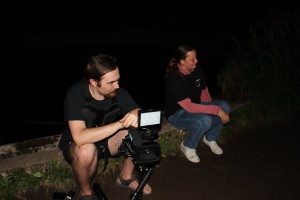
Phase 2: Intervention
In the second phase of the investigation, we use the information from the previous section to try to address fluctuations in these values through our own intervention. That is to say, to have someone react to our investigation methodologies and we see their reaction on the instruments by numerical deviation, or record it on camera by means of, for example, spontaneous movements of objects, electronic sound phenomena, or feel it directly on our own skin.
But no matter how hard we try, nothing happens. The instruments still measure the same values and we don't feel the psychic changes either. There is peace not only in nature, but also in electronics and emotions.
Phase 3: Isolation
Since the research is coming to a fairly clear conclusion, we are still trying to isolate individual members of our group at selected locations on Rolava, in the hope that perhaps this will record some deviation on our instruments. After all, if this is where the mystery and paranormal phenomena are taking place, it must have been recorded ideally by an individual who was here alone. It's at times like this that our minds are most open to environmental stimuli. It is oblivious to the other members of the group.
But even that doesn't help. Solitude and peace are the three words that underline our final impressions.
Conclusion:
We can conclude the Rolava tin mine with the verdict that it is an example of a peaceful place. No abnormalities - even rational ones - were observed during the entire investigation. And so we can recommend this place not for its mystery, but for its tranquility. Yes, history has carved out a certain amount of depression here, but those days are long gone. And the Rolava Tin Mine is the best reminder of them. But it seems unlikely that this place would drain you of energy. Rather - and thank God, actually - it will charge you with the beauty of how our forests are taking back what man once took from them.
If you don't believe it, check out our documentary, where all of this research is comprehensively summarized in a half-hour investigation.
And with that optimistic conclusion, we bid you farewell, next time from another place, the infamous Fairy Tale Farm.
Ondřej Bezouška - author of the article
Official video:
- in Czech, without English subtitles


